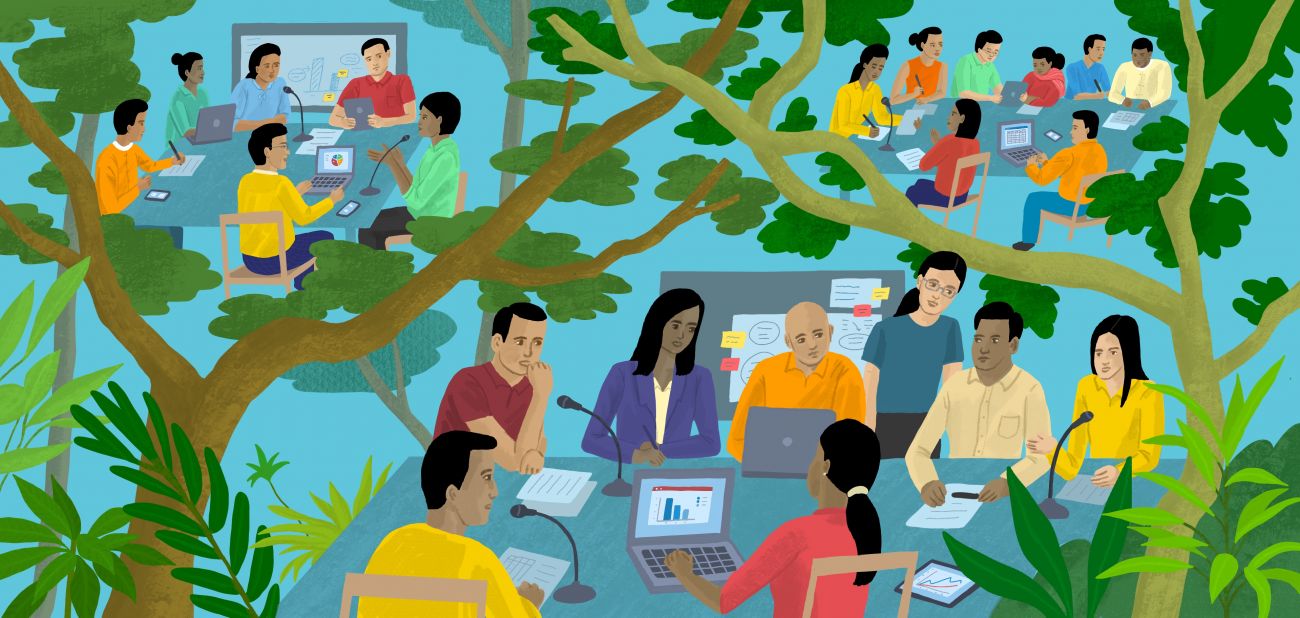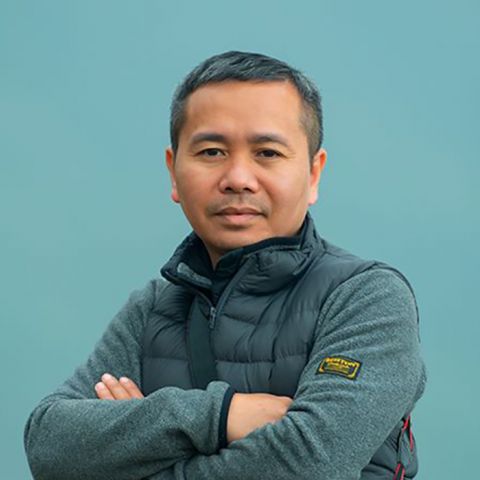

In recent years, the forests of Cambodia have been the scenes of considerable conflict between local communities and powerful commercial interests, often linked to politicians and other elites. While many issues remain unresolved, the government has slowly but surely become more open to considering the needs of forest communities, as conveyed by civil society groups.
For example, Cambodia is developing a major new law, the Environment and Natural Resources Code. To develop each of 11 successive drafts of the code, the government consulted with civil society organizations, including RECOFTC’s V4MF partner, the NGO Forum on Cambodia. Another example is the process through which Cambodia developed its national strategy for engaging with REDD+, the UN-led initiative that aims to reward countries for limiting carbon emissions from their forest sectors.
“Even from the first phase, the government developed a stakeholder engagement strategy and set up a REDD+ Consultative Group to provide comments on behalf of constituents, about the drivers of deforestation, et cetera,” says Tol Sokchea, who coordinates work in Cambodia under RECOFTC’s V4MF project. “There was an acknowledgement of the role of local people, and a recognition of the existence of community forests and community protected areas.”
But while civil society organizations can often have a say in policy processes now, they don’t always get to know whether or not the government has accepted their recommendations—and if not, why not. It is clear that participation can mean different things to different people. Indeed, academics who study forest governance often refer to a ‘ladder of participation’, on which each rung signifies more participation than the rung below.
The ladder
Participation encompasses a broad range of activities. At its most basic, it involves people being told by governments about new laws but not being able to shape those laws. Climb up the ladder and you will find governments that are more open to consulting the public before they act. Higher still and you can find governments that work in active partnership with civil society groups to develop, implement, monitor and improve policies and laws. And while no Mekong country is yet at the top of the ladder, it is possible to see that they are climbing.
Take Myanmar, for example.
“When the government revised its Forest Law in 2018, the Forest Department gave civil society organizations only a limited opportunity to provide input,” says Aung Thant Zin, chief executive officer of the Myanmar Environment Rehabilitation-conservation Network. “Action taken on the advice and recommendations was also limited.”
But the following year, there was considerably more participation by forest stakeholders in the development of Forest Rules for implementing the new Forest Law. The government held consultations in each of the 15 states and regions, and another two at the national level. Government officials, private businesses, academia, national and international nongovernmental organizations, United Nations agencies, local communities, ethnic groups and community forest user groups all took part in the process. According to the European nongovernmental organization Fern, they provided about 2,600 comments.
While the government is still consolidating these inputs, Aung Thant Zin is optimistic that it will take many of the recommendations on board. This is because of recent experience in another area of forest policy, the development of rules to regulate community forestry. Back in 1995, when Myanmar first developed its Community Forestry Instructions, the Forest Department did not seek input from civil society. The rules that emerged enabled communities to use forests only for subsistence needs.
But two decades later, when civil society groups called for the rules to change, the government listened.
“In 2016 and again in 2019, the Community Forestry Instructions were revised and updated with high involvement of civil society organizations, the private sector and government departments,” says Aung Thant Zin.
The revisions progressively increased the rights of community forest user groups to commercialize forest products and set up enterprises, thereby creating greater incentives for sustainable forest management. These and other aspects of the revised Community Forestry Instructions are the result of the inputs of civil society groups. For example, the revised rules emphasize gender equality in the formation of management committees of community forest user groups. They also give communities the right to claim compensation for loss of forest trees, crops and other damages due to implementation of other projects in community forests.
Another example of a recent movement up the ladder of participation is the way civil society groups in Viet Nam have taken part in the process through which the government has negotiated, and is now implementing, a timber trade deal with the European Union. The deal, called a Voluntary Partnership Agreement (VPA), is intended to stop the flow of illegal timber products while improving forest governance and promoting legal trade.
The EU requires participation by civil society in VPA processes, so Viet Nam allocated one seat to civil society during the negotiations and related meetings. However, when the negotiation began, in 2010, the government chose an association of timber processing industries to be the civil society representative. The body could hardly be expected to represent the views of Viet Nam’s diverse civil society groups. Instead, nongovernmental organizations engaged in the process in different ways. In 2014, several of them came together to form a network, the VNGO FLEGT Network, which initially had no formal recognition.
“We followed the process and received documents such as draft technical annexes of the VPA,” says Hoang Xuan Thuy, the vice-director of PanNature. “We then organized research and consultation workshops with different actors, for example, research on the VPA’s potential impacts on livelihoods and research on smallholders living near forests and producing timber.”
Through this work, PanNature and other organizations could influence the negotiations and improve the text of the VPA and its annexes.

The government has taken up many of the points raised by nongovernmental organizations in the VPA’s legality definition.
Hoang Xuan Thuy
“The government has taken up many of the points raised by nongovernmental organizations in the VPA’s legality definition,” says Hoang.
Having proven their value, the government has now formally recognized these contributions of civil society. The VPA, which took effect in June 2019, says that non-state actors including nongovernmental organizations, communities and forest-dependent people will continue to participate in the implementation and monitoring of the VPA. The government has also included civil society in the core group of stakeholders it set up to provide technical support for it and the EU when implementing the VPA.
“Now we are one of the quite strong actors in this process,” says Hoang. “Much of our feedback and comments have been taken by the government to improve policy, such as stakeholder participation in monitoring of legal timber sourcing.”
But while participation has improved markedly since the start of negotiations, Viet Nam is still far from the top of the ladder.
“The government needs to be more open to take into account our comments and feedback,” says Hoang. “It seems to be open but there is still very limited opportunity for civil society organizations to influence it. Also, the time that a draft law is open for comment is very short. For some issues, we need more time to collect evidence or do research.”
Civil society groups also sometimes feel like they are left in the dark. They have given feedback on a draft decree to establish a system for verifying the legality of timber products, for example, but they don’t know yet if the government has taken their ideas on board. Asked if NGOs are happy, Hoang replies with a chuckle: “Not yet.”
The climb up the ladder continues.

